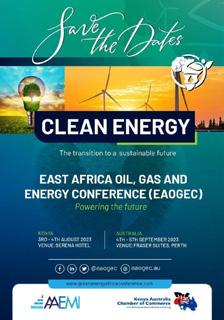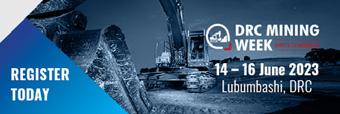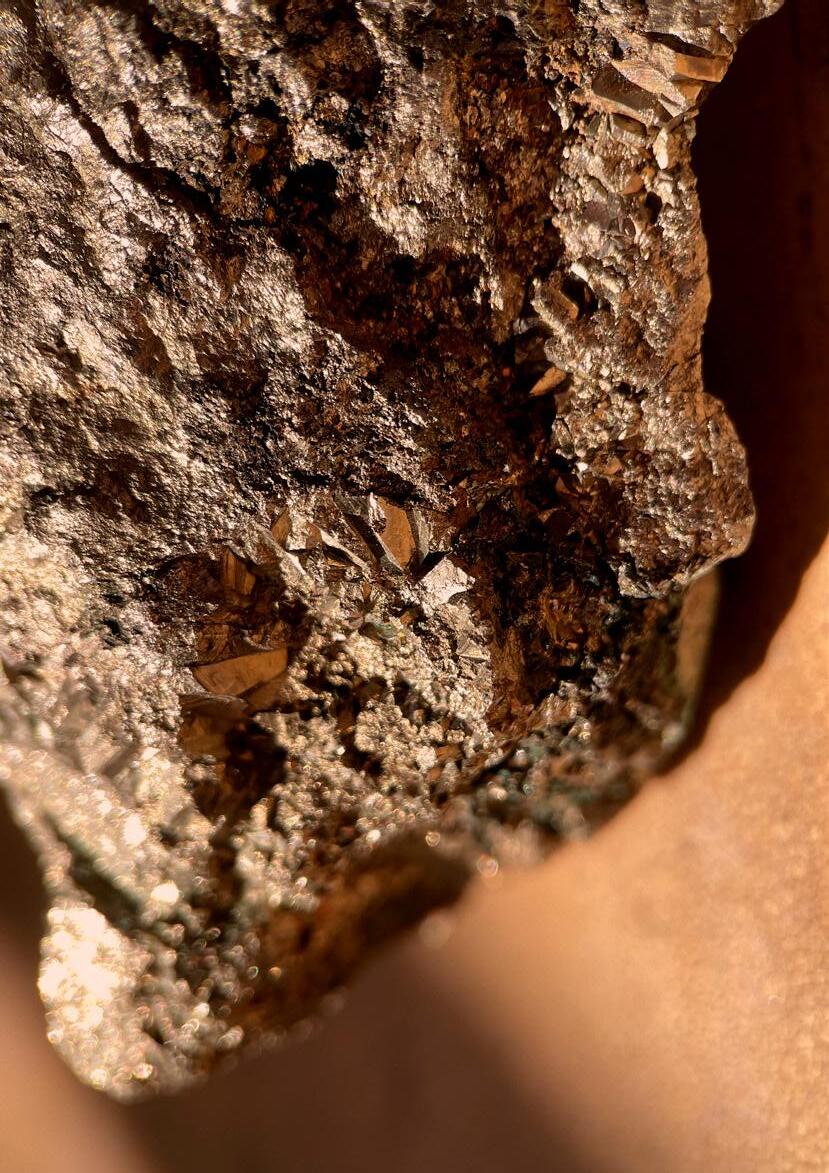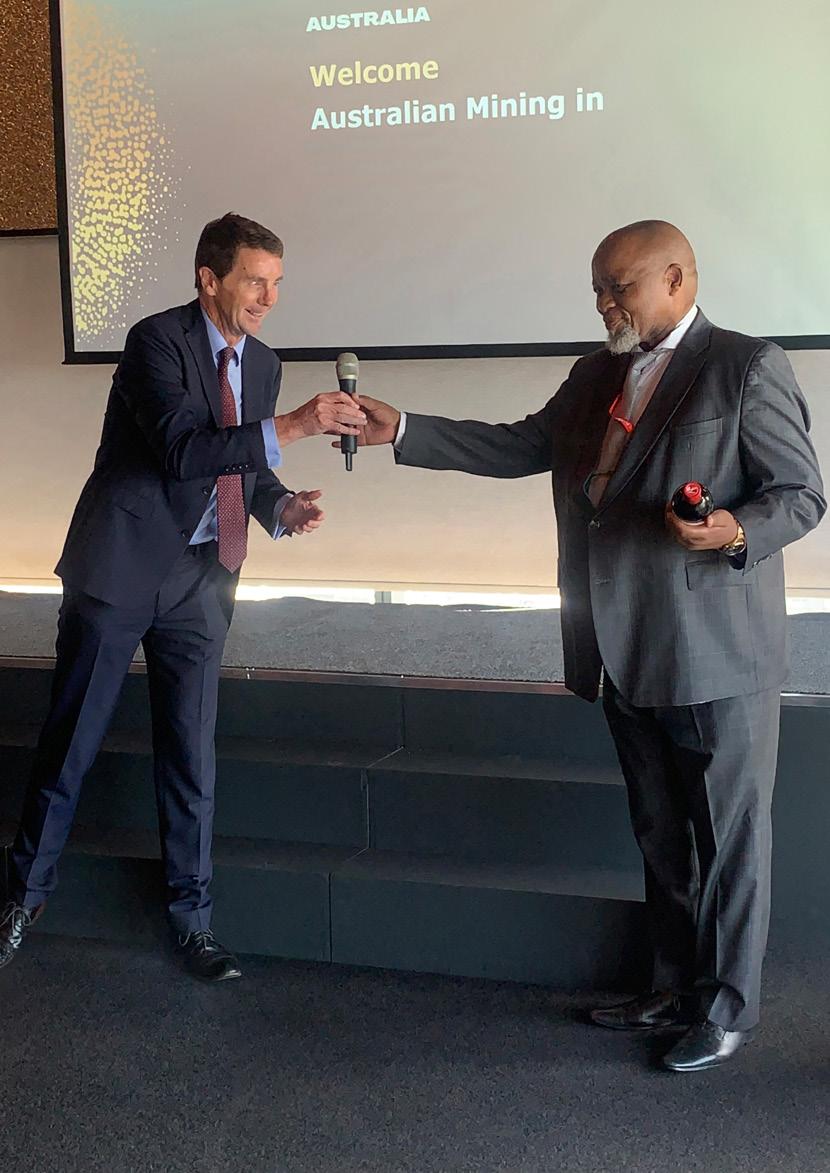

Advertise here
Creative Communications and Publishing Agency
PR/Branding/Marketing/Design Services
Custom Publishing- We offer tailored publishing solutions for both consumer and commercial sectors. Whether you need a glossy magazine, a professional annual report, or a captivating e-book, we've got you covered.

Emerge Edition
Premium advertising or sponsorship
Magazine for Business Leaders and Entrepreneurs. Regions covered: Asia Pacific, Australia, Africa, EMEA, and US
Emerging Brand Africa (Advertising)

Business News Media for Emerging Markets
Events and Media partnership
The Trade Envoy - Emerging Markets: Insights & Diplomacy
The Trade Envoy is a comprehensive review magazine dedicated to the in-depth exploration of emerging markets, facilitating trade relations through incisive reporting across industries, and providing a platform for engaging discussions with key global trade diplomats and stakeholders.


Editor’s Foreword
Dear Readers,
It is with great pleasure to launch our new publication, the TradeEnvoy, an emerging market’s review born out of our established business news platform, Emerging Brand Africa (EmBA Media).
Over the past few months, I had the privilege of attending several key industry events, engaging in insightful dialogues with leading figures in international trade, and exploring new business frontiers.
These experiences form the cornerstone of our first issue, the rise of emerging markets and the increasing interconnection of our global economy. Understanding these markets is more critical than ever. Our team of dedicated analysts and contributors have gone to great lengths to understand the unique characteristics of these markets, their potential and diverse opportunities for growth, and the challenges they may present to both new and established businesses.
We will look at Africa’s increasingly intricate and significant trade relations with other continents, including Asia, the United States, Europe, and Australia. We will explore how these relationships, characterized by both cooperation and competition, are driving economic growth and development in Africa.
From the growing influence of China and other Asian nations in infrastructure development and technology to the established economic ties with Europe and the United States in sectors such as manufacturing, Agribusiness, and services, and the deep trade relationships with Australia in mining and education, Africa’s trade connections are diverse and multifaceted.
These relationships are not just shaping Africa’s economies but also redefining global trade dynamics. They present both challenges and opportunities for African nations, with implications for policy, business strategy, and investment. Our mission with the Trade Envoy is to illuminate these complexities, providing our readers with a nuanced understanding of Africa’s position in the web of global commerce.
In each issue, we will bring you case studies, in-depth analyses, and interviews with key players shaping these economies’ future.
We are excited to launch the TradeEnvoy - an Emerging Markets Review. We are keen to hear your thoughts and perspectives on various growth industries.
Catherine Jonathan, Managing Editor The TradeEnvoy | Emerging Brand Africa
Expanding Australia-Africa Mining Partnership Highlights from the Second Australian Mining in Africa (AMIA) Program 2023
The Australian Trade and Investment Commission (Austrade) organized the second Australian Mining in Africa (AMIA) program, 6-9 February 2023 in Cape Town, South Africa.
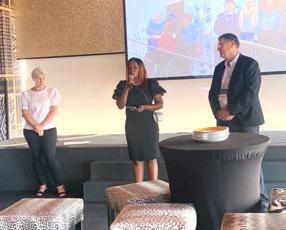
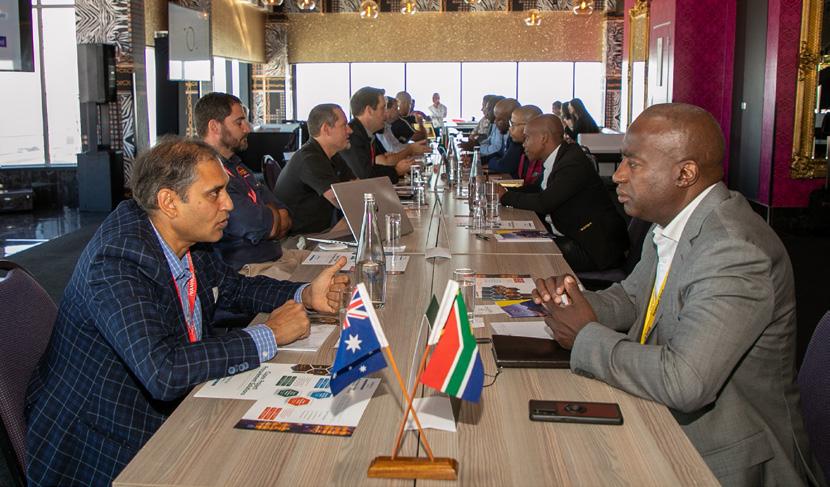
There are over 670 Australian ASX-listed companies with equity in mining in Africa investing a total of over $40 billion AUD, as of Jan 2022. The Australia-Africa trade partnership is only expected to grow in the coming decades.
Champions of Change: Women in Mining
A key session that caught my attention was the Women in Mining roundtable luncheon, the Champions of Change. This was part of AMIA program, and it brought together mining experts and stakeholders to discuss how companies can transform their leadership to facilitate greater female employability, particularly in Africa. One participant pointedly noted, “Transformation in leadership does not merely mean adding women to the mix; it means fundamentally reimagining the mix itself.”
Green Hydrogen: Fuelling the Future

Discussions around Green Hydrogen, attended by major Hydrogen players from South Africa, Australia, and Japan, brought to the fore the potential of this sustainable energy source. “Green Hydrogen is more than an energy source, it’s the promise of a sustainable, decarbonized future for all.”

Transforming Communities through Social Impact Initiatives
Orion Minerals, in collaboration with Qantas sponsored a trip for Zelna Barends, the founder of Zenisha’s Play and Learning Centre (ZPLC), to Australia. The primary objective of this initiative was to raise funds for the centre and increase awareness for children with special needs. ZPLC, a non-profit organization located in South Africa’s Northern Cape, focuses on providing educational support to children with Down Syndrome, fetal alcohol syndrome, and other intellectual or physical disabilities through play. Recognizing the importance of their cause, Orion Minerals took the initiative to help further their mission, for greater impact.
Africa: The World’s Mineral Powerhouse
Africa, continent rich in culture and history, is also a hotbed of minerals. The United Nations Environment Programme (UNEP) estimates that Africa houses a staggering 30% of the world’s mineral reserves, 8% of natural gas, and 12% of oil reserves. With 40% of the world’s gold, 90% of its chromium and platinum, it is no wonder that many African countries see mineral exploration and production as significant contributors to their economies.
Africa is also leading in reserves of bauxite, cobalt, industrial diamonds, phosphate rock, platinum-group metals (PGM), vermiculite, and zirconium. According to the UNEP, Africa holds 65% of the world’s arable land and 10% of the planet’s internal renewable freshwater sources, which further emphasizes the continent’s vast wealth of resources. As per a report published by the World Bank in 2019, over 9.9 million people in Sub-Saharan Africa are employed in the mining sector, with significant participation from women, especially in artisanal and small-scale mining (ASM).
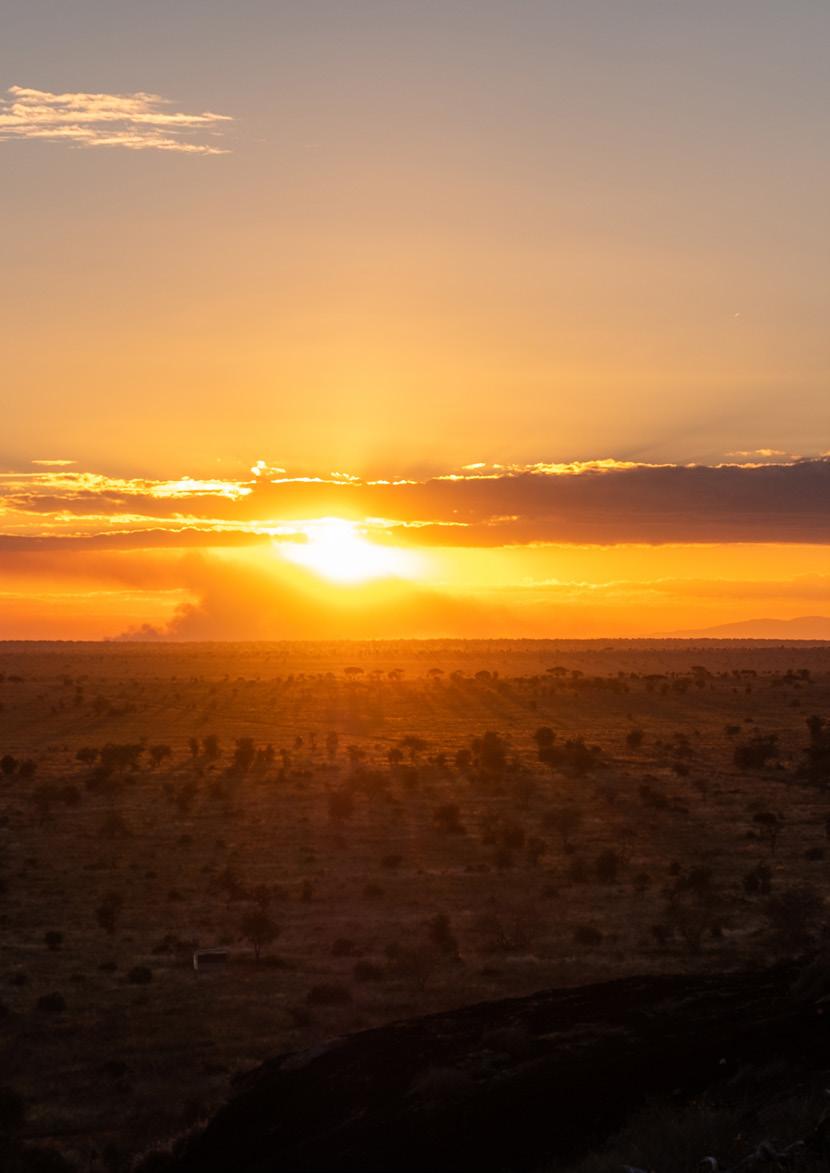
Global Victoria is the trade facilitation agency of the State Government of Victoria, serving as a bridge worldwide. They provide assistance to Victorian businesses in reaching international markets, advocating for Victorian exporters worldwide, and globally endorsing business engagement with Victoria.


Alex Veale, Global Victoria’s Lead for Sustainability & Advanced Manufacturing, expressed during the Mining Indaba 2023, “Our significant support for equipment/technology companies operating directly in the mining/METS space reflects our focused strategy to empower sectors with great potential and high global demand. This initiative is a strategic move towards strengthening Victoria’s export economy and showcases our commitment to facilitating global connections and opportunities.” This quote encapsulates Global Victoria’s proactive approach in fostering Victoria’s economic growth through international trade partnerships.
The Shift to Green and Smart Mining
The narrative of mining in Africa is changing. Growing environmental concerns have driven major players on the continent to adopt sustainable mining practices. The focus is on rehabilitating ecosystems disrupted by mining activities and introducing more environmentally friendly mining practices.

In Kenya, an Australian firm, Base Titanium, is taking the lead in sustainable mining practices. Operating in the coastal county
of Kwale, Base Titanium has set a benchmark for responsible mining in the region. The company’s Kwale Mineral Sands project, Kenya’s largest mining venture, has proven that responsible behaviors in mining can foster a sustainable and profitable business.
Elevating Women in Mining

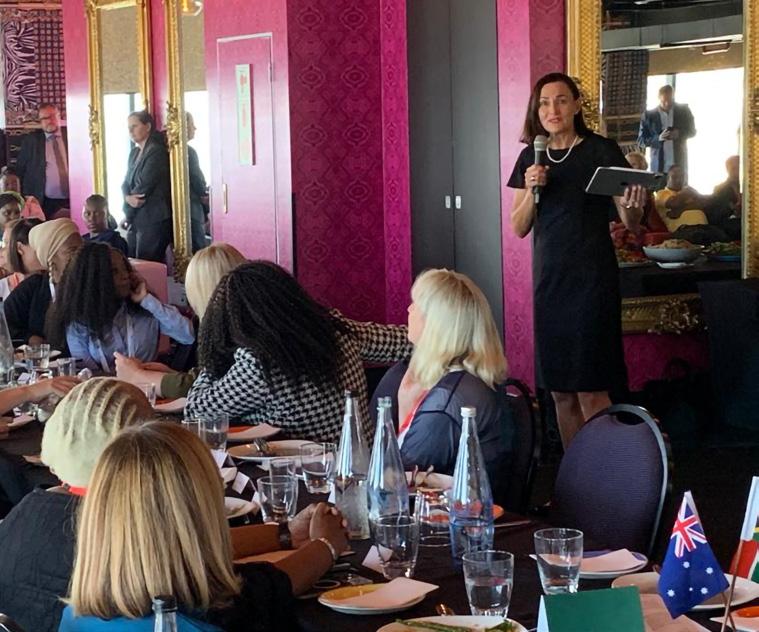
The role of women in the mining industry is integral, especially in ASM. The International Labour Organization (ILO) estimates that women make up around 8 to 12 percent of the world’s mining workforce. The formation of the Association of Women in Mining in Africa in 2015 empowers women in the mining sector by giving them a platform to voice their concerns.
As more African governments work towards the formalization of mining activities and the establishment of large-scale mines, opportunities for women in the industry are expected to increase. A formalized mining industry would provide protection of human rights, ending discrimination against women and enabling their active participation.
Expanding Australia-Africa
Mining Partnership: Highlights from the Second Australian Mining in Africa (AMIA) Program 2023
The Australian Trade and Investment Commission (Austrade) organized the second Australian Mining in Africa (AMIA) program, 6-9 February 2023 in Cape Town, South Africa.

There are over 670 Australian ASX-listed companies with equity in mining in Africa investing a total of over $40 billion AUD, as of Jan 2022. The Australia-Africa trade partnership is only expected to grow in the coming decades.
Designed to support this blossoming partnership, the AMIA program provided a platform for industry trends, introduced Australian mining capabilities, and presented potential opportunities for collaboration within the African continent. Over 300 industry representatives participated in the comprehensive program, including a series of G2B and B2B sessions, meetings, roundtables, networking events, and business matchmaking. Key industry themes discussed in the panel program ranged from sustainable training and skills development to women in mining and their critical role in sector-wide changes. The discourse also looked into the next-generation mining and Australia’s stature as a ‘best practice’ partner, culminating in an in-depth
session on green hydrogen, featuring industry experts from Australia, Japan, and South Africa. Additionally, other sessions focused on mining investment opportunities across various African markets and valuable insights from Australian junior miners operating across Africa. The highlight of the program for many Australian METS companies was the innovative ‘B2B speed pitching’ event with African-based supply and service companies, signaling a promising avenue for future collaborations.
A number of African Mining and Resources Ministers joined the program as VIP guests and keynote speakers, including the Hon. Gwede Mantashe, Minister of Mineral Resources and Energy of South Africa the Hon Lefoko Fox Moagi, Minister of Mineral Resources, Republic of Botswana; the Hon. Samuel A. Jinapor, Minister for Lands and Natural Resources, Republic of Ghana; and the Hon Hlomi Moleko, Minister of Natural Resources, Republic of Lesotho.
opportunities and government support available for Australian companies looking to do business in their respective markets. Guest speakers during the networking receptions included Samuel Azumah Nelson, former WBC super featherweight boxing champion, and Brian Mitchell, who retired as undefeated WBA super featherweight champion.
A total of 43 Australian mining and METS companies were sponsors, participants, and partners of the AMIA program, with an additional eight Australian companies participating in the Global Victoria pavilion at the Mining Indaba held concurrently.
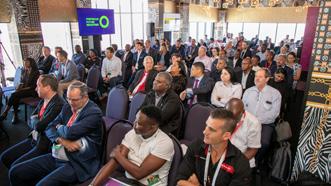
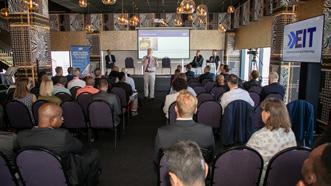
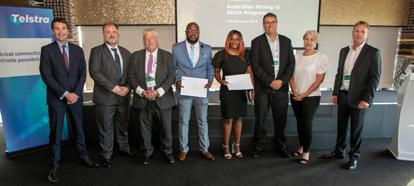
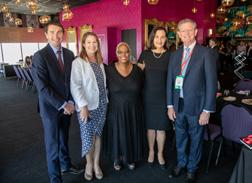

The presence of Australian heads of mission from Ghana, Egypt, and South Africa further underscored the strategic significance of the event. Australian heads of mission from Ghana, Egypt, and South Africa also attended the program. Watch the program highlights at https://youtu.be/Riu1GBzRhts

EXPLORING EMERGING MINING
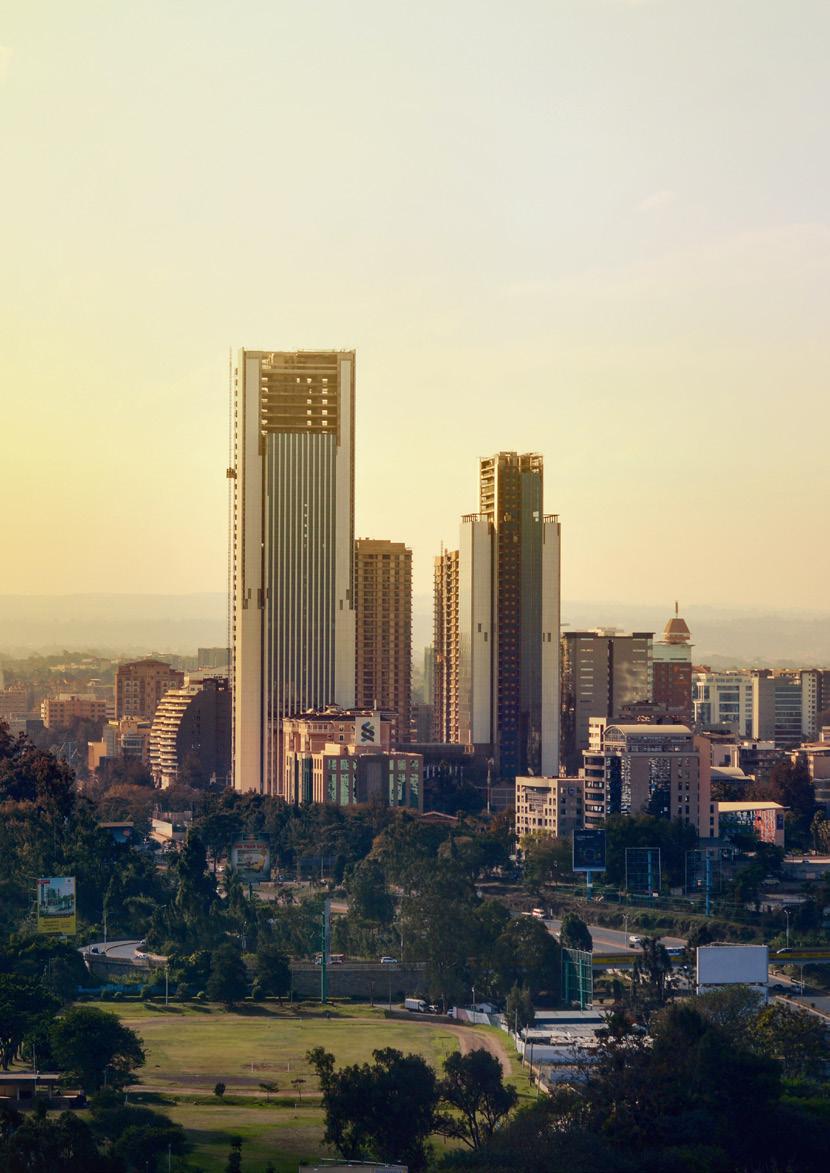
AND MINERAL RESOURCES
MARKETS:
KENYA IS OPEN FOR BUSINESS
The government of Kenya, under the leadership of President William Ruto, is implementing measures to attract foreign businesses. President Ruto, speaking on May 8, 2023, at a business forum in The Hague, Netherlands, stated, “We have taken measures to improve our one-stop-shop facility to make it easy for investors to do business in the country.” He highlighted the Government’s initiative to attract foreign direct investments.
Kenya Investment Authority
In a bid to encourage investment, the National Assembly enacted the Investment Promotion Act, 2004 (the IPA). The IPA seeks to reduce bureaucratic delays concerning licensing, immigration, and the negotiation of tax incentives and exemptions. This Act led to the establishment of the Kenya Investments Authority (KenInvest) tasked with achieving the legislation’s goals.
Investment Incentives
For a foreign investor to qualify for an investment certificate, the minimum value of the proposed investment should be USD 100,000 or its equivalent in another currency. KenInvest evaluates an investment’s contribution to the Kenyan economy considering several factors like job creation, skill development, economic development, technology
For a foreign investor to qualify for an investment certificate, the minimum value of the proposed investment should be USD 100,000 or its equivalent in another currency. KenInvest evaluates an investment’s contribution to the Kenyan economy considering several factors like job creation, skill development, economic development, technology transfer, tax revenue, foreign exchange impact, utilization of domestic raw materials, and value addition in processing local resources.
transfer, tax revenue, foreign exchange impact, utilization of domestic raw materials, and value addition in processing local resources.
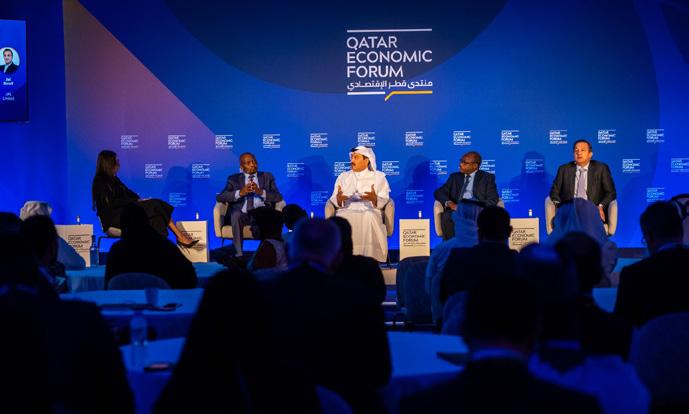
Investors granted an investment certificate under the IPA receive important benefits, primarily facilitated by KenInvest in issuing all necessary licenses and permits required for the investor’s operations. Additionally, there are several industry-specific incentives in the form of tax exemptions and lower tax rates for sectors like energy, mining, hospitality and tourism, fishing, and the automotive industry to spur economic growth.
Investor Protection
Several reforms have been introduced to Kenya’s laws to protect investors. Notably, the Business Laws (Amendment) Act, 2020 amended the Companies Act to protect the rights of minority investors. Now, minority
shareholders holding a minimum of 5% of a company’s paid-up capital can introduce agenda items in annual general meetings. The Institute of Economic Affairs (IEA) projects that the government could earn no less than Ksh.12 trillion directly from mineral reserves. The IEA report ‘Resource Bliss, Dilemma or Curse’ highlights the potential wealth from rare earth minerals, coal, and oil. Kenya, richly endowed with mineral resources, has reformed the sector’s legal framework through the Mining Act 2016 and updated geodata through a recent airborne survey.
James Ng’ang’a, Commissioner for Petroleum in the Ministry of Petroleum and Mining, has expressed optimism about Kenya’s future as a leading oil producer in Africa. The Ministry has embarked on mapping potential offshore and on-shore oil-producing blocks along the Kenyan Coast to supplement the oil currently being produced from
Blocks 13T and 10 BB in Lokichar in Turkana County.
Kenya’s mining map consists of four key belts:
1. The gold-rich Greenstone belt in Western Kenya is linked to the lucrative mining belts heavily exploited in Tanzania.
2. The Mozambique belt, which passes through Central Kenya, is a rich source of gemstones.
3. The Rift belt is known for soda ash, fluorspar, diatomite, and substantial geothermal resources.
4. The Coastal belt, which includes existing titanium investments, extensive deposits of rare earth
Kenya
minerals and niobium, and ongoing offshore oil exploration. The government has a long-term plan for a pipeline extending from the oil-rich Turkana region to the port of Lamu. However, the project, which commenced in March 2021, faces challenges around land acquisition. In the interim, oil companies are using existing roads and rail infrastructure to transport crude oil to the coast.
Petroleum exploration activities in Kenya are governed by the Petroleum Act, 2019. This Act covers a variety of issues, including profitsharing methods, local content rules, licensing requirements, and the regulatory bodies overseeing the oil and gas sector.
Kenya also boasts one of Africa’s richest coal deposits, but exploitation plans have faced opposition due to climate change concerns. Regardless, with a rapid shift to green energy, Kenya still hopes to benefit from its oil and gas deposits. The government proposed the construction of a 1,050-megawatt coal plant in Lamu County in 2013, which would have been the first coal-fired plant in Kenya and East Africa. Kenya has enough current and potential capacity for renewable energy generation to meet and exceed projected demands through 2030.
The mining sector’s significant potential is highlighted by its inclusion in Kenya’s Vision 2030 program as a strategic sector and the creation of the Ministry of Petroleum and Mining.
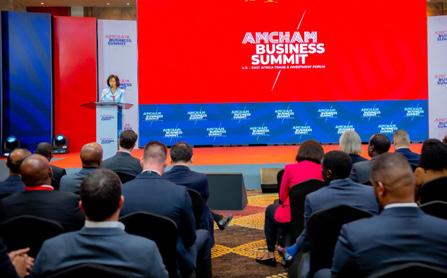
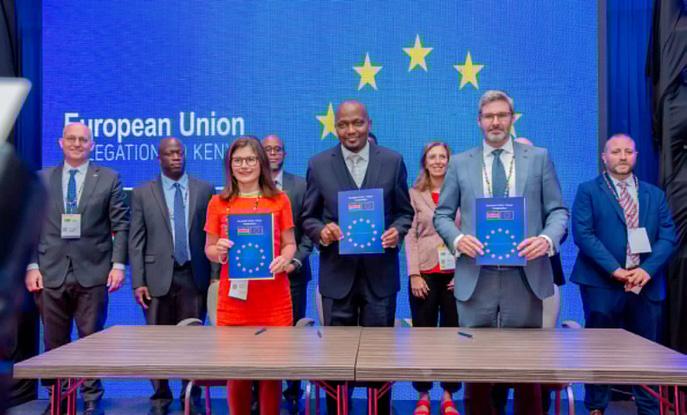
also boasts one of Africa’s richest coal deposits, but exploitation plans have faced opposition due to climate change concerns
A word from the Cabinet Secretary
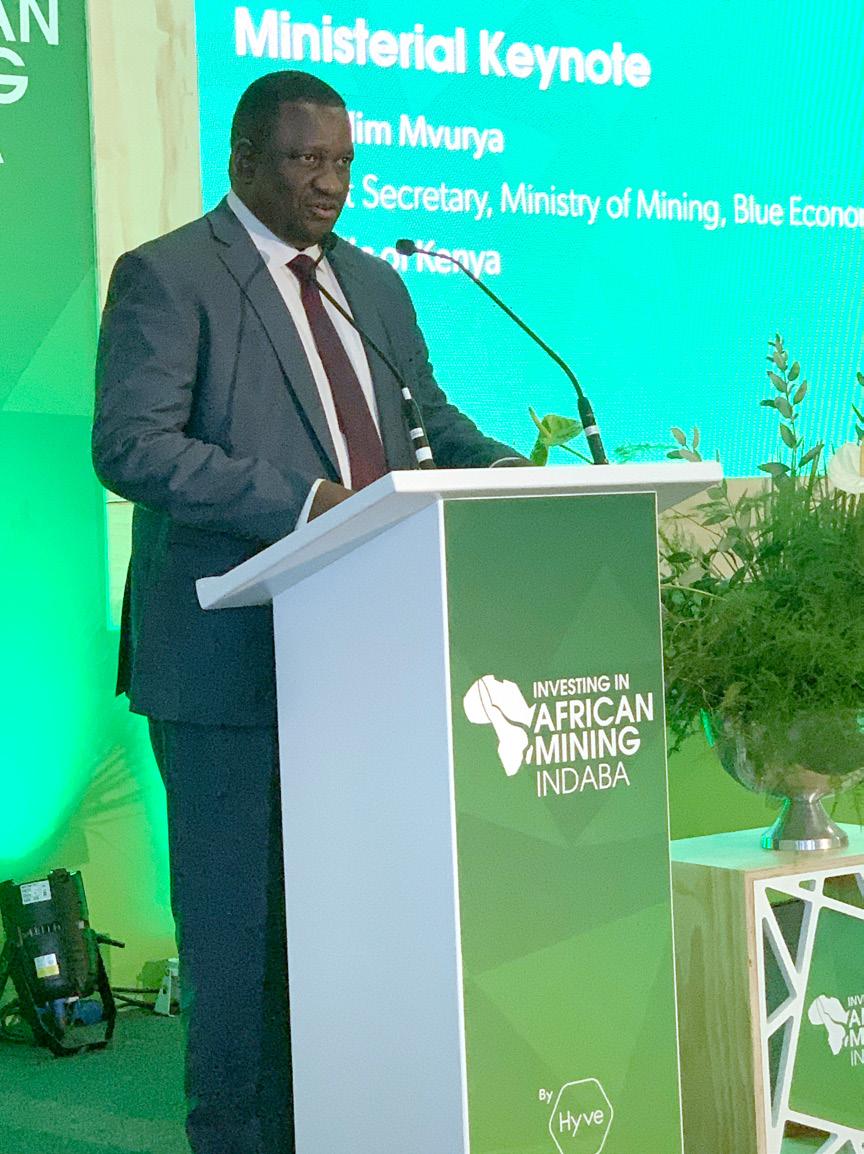
Kenya has primed the stage for mineral investment, inviting potential investors to capitalize on a sector yet to be fully exploited for various reasons.
Speaking at the Mining Indaba 2023 in Cape Town, South Africa, Kenya’s Minister for Mining, Blue Economy, and Maritime Affairs, Salim Mvurya, stated that groundwork had been laid for a number of minerals, including copper, graphite, and rare earth.
“I want to assure our investors and colleagues in various countries that Kenya is joining the league of mineral investment in Africa,” declared Mvurya. The minister acknowledged the need for the country to further improve its regulatory framework to enhance the investor environment. “We need to ensure we have an enabling legislative framework. We have a progressive law which clarifies most of the grey areas that have existed.”
These grey areas involve issues surrounding artisanal miners, royalty sharing, and licensing. “We need to provide opportunities to review some of these sections for the benefit of the government and communities.”
Kenya plans to roll out new policies on value addition within the next few months, banking on minerals to enhance livelihoods across the entire value chain. Mvurya disclosed that his ministry has concluded geo-survey data in all 47 counties (regional administrative units), positioning the mining sector as a key economic indicator. This includes
“I want to assure our investors and colleagues in various countries that Kenya is joining the league of mineral investment in Africa,” declared Mvurya. The minister acknowledged the need for the country to further improve its regulatory framework to enhance the investor environment. “We need to ensure we have an enabling legislative framework. We have a progressive law which clarifies most of the grey areas that have existed.”
Salim MvuryaKenya’s Minister for Mining, Blue Economy, and Maritime Affairs


potential minerals within the Indian Ocean’s blue economy.
Addressing the subject on the value chain, he emphasized the importance of benefiting local communities while acknowledging the sector’s potential impact on climate change. Kenya is committed to welcoming investors with a clear vision of mechanisms that will not compromise environmental protection amid pressing climate change concerns. “We need to put in place environmental mechanisms so that as investments grow, we also
grow our portfolio in environmental protection.”
Furthermore, Mvurya assured investors of Kenya’s swift progression towards digitizing all services within the ministry. “As part of the government’s modernization of its programs, we aim to ensure all services are available online. We want to position the country to have our services accessible online, enabling investors to apply and access our mining information at the touch of a button on their phones.” The online service will be operational in the country by June this year.
Hon. Salim MvuryaBase Titanium: Australian Firm leading Kenya’s Green Mining sector
Kenya has made considerable progress in the sector through strategic partnerships with private investors engaged in exploration and mining.
Base Titanium is among the leading companies in the Kenyan mining market. Since 2013, the Australian firm has been at the helm of operations at the Kwale Mineral Sands Project situated in the Kenyan Coast region. The Mineral Sands are rich in a range of valuable minerals, including Ilmenite, Rutile, and Zircon. According to the company, these minerals form pigments used in manufacturing paints and plastic. Currently, Base Titanium controls 65 percent of Kenya’s mining industry, making it the biggest player in Kenya..
The Mineral Sands project forms part of Kenya’s long-term development blueprint named Vision 2030, which aims at, among other goals, establishing Kenya as an industrial nation by the year 2030.
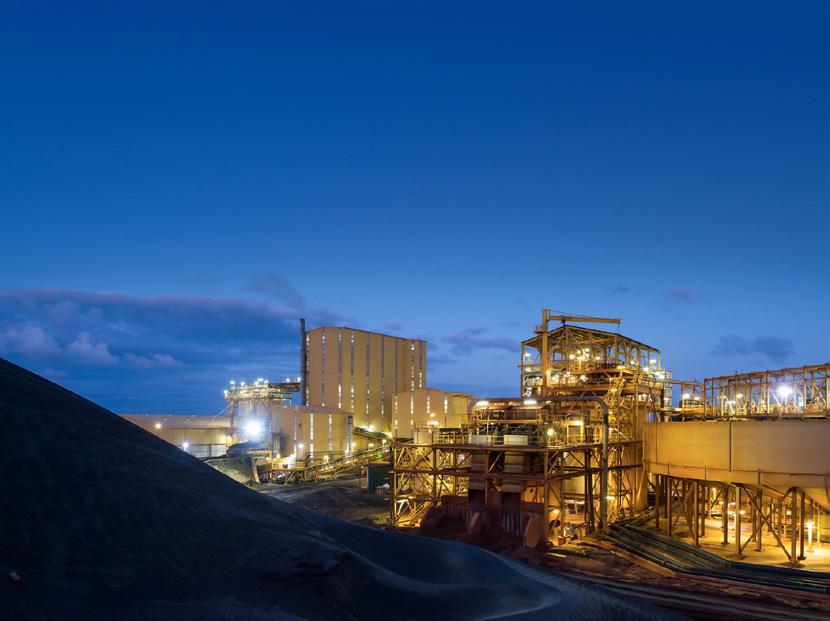
Beyond drilling and extraction activities, Base Titanium strives to embody an ideal, reciprocal relationship with the local community. The company’s operations prioritize environmental conservation and community welfare improvement.
Environmentally Friendly Operations
Environmental conservation activities are central to operations at the Kwale project, as the company seeks to mitigate environmental degradation. Initiatives include mangrove conservation along the Kwale Coastline and the restoration of previously mined land. Base Titanium maintains the principle that “Mining can be green and environmentally friendly if mining companies minimize surface disturbance and commit to rehabilitating and restoring mined-out land post-mining.”
In partnership with the State Department of Environment, Base Titanium works diligently to protect the environment. The Australian firm has also invested in community programs designed to directly benefit the area residents. These include establishing new schools with quality structures, creating local employment opportunities, and enhancing food security in an otherwise semi-arid region.
Elijah Mwangi Principal Secretary for the Department of Mining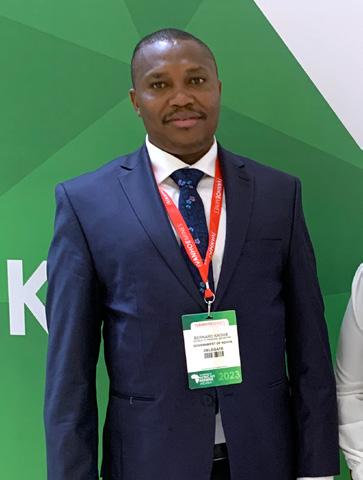
mining plans, as the government looks to capitalize on public-private partnerships to develop more commercially viable projects
Speaking during a visit to the Kwale County-based project on May 5, Principal Secretary for the Department of Mining Elijah Mwangi affirmed the state’s commitment to streamlining operations within the sector as a way of attracting more investors. “We intend to provide policy stability, promote ethical mining practices, restore investors’ confidence, and spur investment in the industry,” stated Mwangi.
Botswana and Namibia
 Hon. Lefoko Maxwell Moagi Minister of Minerals & Energy Republic of Botswana
Hon. Lefoko Maxwell Moagi Minister of Minerals & Energy Republic of Botswana
In 2014, Botswana and Namibia signed an agreement to establish a jointly run company that supervised the construction of the TransKalahari Railroad.
The US$ 9.5 billion Trans-Kalahari railway meant to connect Botswana’s Mmamabula coal fields to Walvis Bay in Namibia is, however, yet to commence.

Upon completion, the 1,900km Trans-Kalahari railway is expected to allow the export of up to 65 million tonnes of coal a year from Botswana through Walvis Bay. As a result, this would unlock the value of coal mining in the South African country and power generation in the entire region. It is also expected to provide greater access to global markets for other landlocked countries in the region. These countries include Malawi, Zambia, and Zimbabwe.
Diamonds Are Forever: Opportunities in Botswana
Botswana, known for its rich diamond reserves, has been making strides to solidify its position as a global diamond hub. In 2008, the Diamond Technology Park was established with four areas of focus: diamond cutting and polishing, establishing a rough and polished diamond trading facility, developing diamond jewelry manufacturing, and support industries.
The park was designed to attract diamond technology companies from around the globe. A significant boost to this ambition came in 2016, when the U.S. International Development Finance Corporation (DFC), in partnership with Barclays and Lazare Kaplan, approved a $125 million loan guarantee facility, aimed at stimulating diamond processing
Perhaps one of the most significant developments was the relocation of the De Beers Group’s diamond sorting and sales facility from the United Kingdom to Botswana, a move that further solidifies the country’s position as a key player in the diamond industry.
in Botswana. A second tranche of the same amount was approved in 2018, in partnership with the Standard Bank Group.
Perhaps one of the most significant developments was the relocation of the De Beers Group’s diamond sorting and sales facility from the United Kingdom to Botswana, a move that further solidifies the country’s position as a key player in the diamond industry.

In addition to diamonds, Botswana has sought to attract investment in targeted sectors and geographic areas through the establishment of a Special Economic Zones (SEZ) Authority.
Unleashing Potential: The Trans-Kalahari Railroad
Botswana and Namibia took a significant step towards economic integration and trade facilitation in 2014 by agreeing to establish a jointly-run company to supervise the construction of the Trans-Kalahari Railroad. This ambitious $9.5 billion project aims to connect Botswana’s Mmamabula coal fields to Walvis Bay in Namibia, unlocking the potential of the region’s coal reserves.
Although the project has yet to commence, the implications of the 1,900 km Trans-Kalahari railway are enormous. Once completed, it is expected to facilitate the export of up to 65 million tonnes of coal per year from Botswana through Walvis Bay, enhancing the profitability of coal mining in the country and potentially boosting power generation in the entire region.
Furthermore, the Trans-Kalahari railway would provide greater access to global markets for other landlocked countries in the region, such as Malawi, Zambia, and Zimbabwe. This promises to bring unprecedented economic opportunities and growth to these countries, transforming the Southern African economic landscape.
SOUTH AFRICA
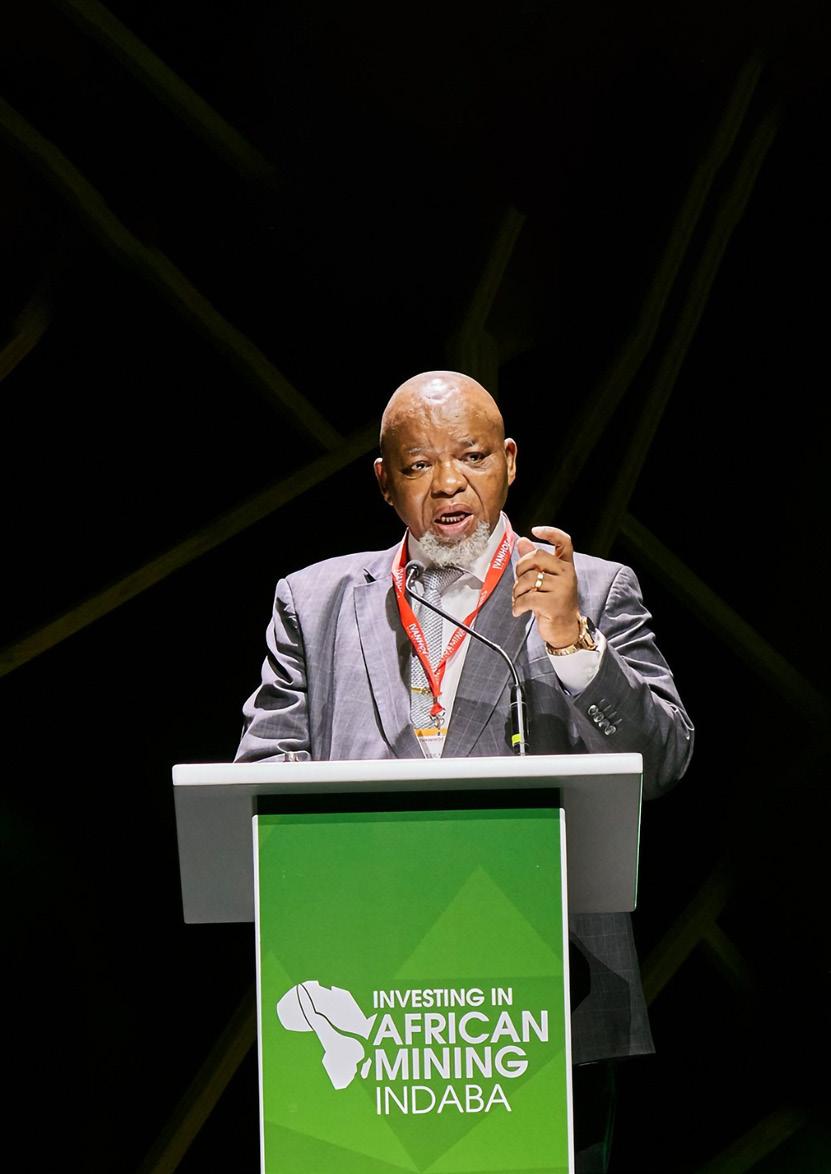 Hon. Gwede Mantashe Minister of Mineral Resources and Energy of South Africa
Hon. Gwede Mantashe Minister of Mineral Resources and Energy of South Africa
Untapped Potential Mineral Resources and Mining in South Africa
South Africa is known for its diverse wealth of minerals, a testament to the country’s geological richness. With a range that includes diamonds, gold, iron ore, platinum, manganese, chromium, copper, uranium, silver, beryllium, and titanium, South Africa stands as a global leader in the mining industry.
In terms of energy provision, South Africa largely relies on its vast coal reserves, which currently supply over 70% of its energy requirements, including electricity and liquid fuels. According to the Minerals Council South Africa, the country’s coal reserves are sufficient to meet its needs for more than a century, underscoring the crucial role that coal plays in South Africa’s energy matrix.
However, South Africa’s ambitions in the biofuels sector have been hampered by an inadequate regulatory regime and concerns that large-scale biofuel production could impact food security and affect food prices.
South Africa’s industrial-scale mining journey began in the 1850s with the
According to Statista, Anglo American Platinum was South Africa’s leading mining company in terms of market capitalization as of June 2022, with a market capitalization amounting to R378 billion, equivalent to Ksh.2.7 trillion.

establishment of the first copper mine. This was followed by the discovery of diamonds in Hopetown in 1867 and gold in 1870. The mining industry has since grown to become a crucial component of South Africa’s economy, contributing roughly R219.5 billion (approximately Ksh.1.5 trillion) to the country’s GDP in 2021.
Leading Mining Companies in South Africa
South Africa’s mining industry is home to some of the world’s leading mining companies. According to Statista, Anglo American Platinum was South Africa’s leading mining company in terms of market capitalization as of June 2022, with a market capitalization amounting to R378 billion, equivalent to Ksh.2.7 trillion.
Following closely is Kumba Iron Ore, with a market capitalization value of R169 billion (approximately
Ksh.1.2 trillion). The presence of such industry giants in the South African market underscores the country’s position as a major player in the global mining industry.
While South Africa has made significant strides in its mining sector, challenges remain. The regulatory constraints in the biofuels sector, along with concerns about environmental impact and community engagement, need to be addressed to ensure the sustainability of the industry. Yet, with its abundant mineral resources and established mining companies, South Africa offers immense potential for further growth and development in its mining industry. The country continues to attract investors worldwide who recognize the country’s untapped mineral wealth and are eager to participate in its promising future.
Mining Companies in Zambia
For companies interested in establishing mining operations or opening mining companies in Zambia, the Ministry of Mines, under which the Chamber of Mines operates, is the first point of contact. These bodies facilitate an understanding of the legal and regulatory landscape, helping companies navigate the Mines and Minerals Development Act, the primary law governing the Zambian mining sector.
Notable mining companies

operating in Zambia include First Quantum Minerals Ltd, Barrick Gold Corporation, and Glencore Plc. These major players have significantly contributed to the growth and development of the Zambian mining sector.
Artisanal and Small-scale Mining (ASM) in Zambia
Beyond the large-scale mining companies, the artisanal and small-scale mining (ASM) sector is a crucial aspect of Zambia’s mining landscape. According to the United Nations, approximately 20 million people work in ASM, accounting for 45 percent of all mining activity. In Sub-Saharan Africa, the impact of abandoned mines on human and ecosystem health is a significant issue that has not been adequately addressed. For many households in
Zambia, ASM is deeply entrenched in cultural traditions, providing essential livelihoods.
Sustainable Mining A Priority
The United Nations Environment Programme (UNEP) emphasizes that unsustainability in resource utilization and illegal activities have cost Africa an estimated $195 billion annually through illicit financial flows, illegal mining, illegal logging, unregulated fishing, and environmental degradation. This massive loss underlines the urgency for sustainable practices in the mining sector. Africa’s future growth and prosperity hinge on harnessing its vast natural resources sustainably and equitably.
The African Ministerial Conference on the Environment (AMCEN) also recognizes that natural capital underpins the continent’s economy. With a call for sustainable wealth creation and investment from the use of natural resources, the conference envisions meeting the United Nations’ 2030 Agenda on Sustainable Development and the Africa Union’s Agenda 2063.
Renewable Energy Zambia’s Future
The success of the Mining Indaba 2023 event highlighted the resolve of stakeholders in Africa’s
mining sector to move towards sustainable and renewable practices. As the world transitions towards net-zero emissions, it is imperative for Zambia and Africa at large to leverage their vast resources efficiently and responsibly.
Efforts are underway to integrate into the chemical space, particularly the floro-chemical market valued at $21 billion globally. Furthermore, a transition to green energy, particularly in the form of green hydrogen, has been identified as a promising opportunity for the mining industry.
While challenges remain, particularly in areas of exploration and funding, Africa’s mining sector is on a positive trajectory. With sound policy and robust regulatory regimes, Africa can tap into its vast mineral wealth to power a sustainable and prosperous future. This potential is not lost on investors and industry players who recognize that with the right approach, Africa’s mining sector can deliver significant economic, social, and environmental benefits.
However, more work needs to be done. Stakeholders across the board, from policymakers to industry players and local communities, must continue to collaborate and innovate to ensure the mining sector’s sustainability. The future of mining in Africa depends on it.
DEMOCRATIC REPUBLIC OF CONGO (DRC)
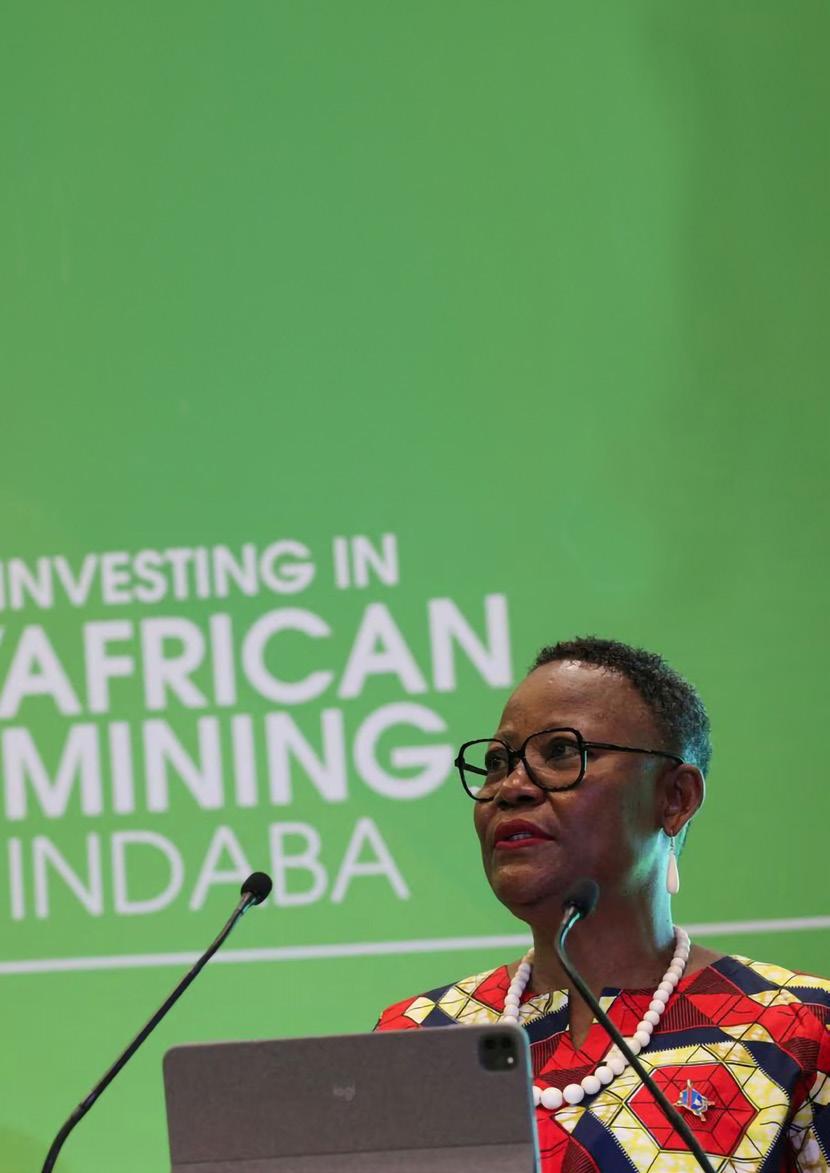
POWERING THE FUTURE
The Democratic Republic of Congo (DRC) is renowned for its mining potential, boasting over 1,100 distinct mineral substances.
Speaking at the Mining Indaba 2023, DRC’s President Felix Tshisekedi invited foreign investors to contribute to local communities that have been extensively impacted by mining activities.
However, he re-emphasized his vision of local industries participating in the processing of mining products, enabling African populations to benefit more significantly from the wealth of their subsoil.
“The mining sector in the Democratic Republic of Congo can only be profitable for you, the investors, if it responds to the aspirations of the local communities affected by the mining projects. It is within this exact context that revenue redistribution mechanisms have been incorporated into my country’s legislation, for the benefit of the populations impacted by mining projects,” stated President Tshisekedi.
Tshisekedi also expressed his intention to attract investors for cobalt and lithium processing in the country. He confirmed that exploration for two minerals - nickel and chrome - will commence in the coming days in Congo’s southern, diamond-rich Kasai region. He reassured that measures had been implemented to manage the security situation and assist the Congolese
in benefiting from their country’s mineral resources through rational exploitation.
The Strategic Role of DRC’s Cobalt in the Global Energy Transition
The Democratic Republic of Congo (DRC) is at the center of a global shift towards renewable energy sources and sustainable technologies, thanks to its rich Cobalt reserves. In 2020 alone, DRC’s Cobalt production amounted to 90,000 tons, which represented an impressive 41 percent of the world’s Cobalt supply. This blue metallic element is a critical component in the manufacturing of lithium-ion batteries, which are ubiquitous in modern electronics such as smartphones, laptops, and most importantly, electric vehicles (EVs).
Driving the Electric Vehicle Industry
As the world moves closer towards achieving its net-zero carbon emission goals, the demand for clean, renewable energy sources is set to grow exponentially. As such, Cobalt, a crucial element in the production of rechargeable batteries powering this green revolution, is primed for an unprecedented surge in demand.
The electric vehicle industry, in particular, is one sector where the significance of Cobalt cannot

be overstated. As traditional petroleum-fueled vehicles fall out of favor due to their high carbon emissions, EVs are quickly emerging as a sustainable alternative. Given their reliance on high-capacity rechargeable batteries, the production of EVs is directly linked to the availability of Cobalt.
According to industry forecasts, the electric vehicle market is expected to experience substantial growth over the coming years. By the end of 2023, the EV market is projected to sell around 14 million units. If achieved, this figure would account for a significant portion of the total cars globally. Given that each electric vehicle requires a substantial amount of Cobalt for its lithium-ion battery, the projected growth of the EV market underscores the strategic importance of DRC’s Cobalt reserves.
Key Statistics on Cobalt Demand
The global Cobalt market size was estimated at USD 5.48 billion in 2020 and is expected to grow at a compound annual growth rate (CAGR) of 12.8% from 2021 to 2028, according to a report by Grand View Research. This impressive growth is primarily driven by the rising demand for lithium-ion batteries in electric vehicles and various consumer electronics.
According to a study by ResearchAndMarkets.com, the global market for lithium-ion batteries is set to reach $129.3 billion by 2027, growing at a CAGR of 18.0% over the analysis period 2020-2027. The lithium cobalt oxide segment, which currently accounts for a 26.2% share of the global lithiumion battery market, is expected to maintain a 16.5% growth momentum through this period.
Such projections give an insight into the significance of the DRC’s Cobalt reserves in the energy transition and sustainability efforts. As one of the most important suppliers of this mineral, the DRC is in a strategic position to influence the renewable energy market and capitalize on the rising global demand for electric vehicles.
Challenges and Opportunities
However, capitalizing on this opportunity is not without its challenges. The mining industry in DRC, including Cobalt extraction, has been criticized for its human rights issues, including child labor and poor working conditions. It is imperative for the DRC and the mining companies operating within its borders to ensure that Cobalt is sourced responsibly and ethically.
The DRC government is committed to taking steps to ensure that its people benefit from the Cobalt wealth. This includes implementing policies that promote economic development, such as investing in infrastructure, education, and healthcare. At the same time, strengthen its partnerships with
According to a study by ResearchAndMarkets.com, the global market for lithium-ion batteries is set to reach $129.3 billion by 2027, growing at a CAGR of 18.0% over the analysis period 20202027. The lithium cobalt oxide segment, which currently accounts for a 26.2% share of the global lithium-ion battery market, is expected to maintain a 16.5% growth momentum through this period.
international partners to ensure that the mining industry operates in a manner that is environmentally sustainable.

Despite these challenges, the DRC’s Cobalt reserves present an exciting opportunity for the country’s economic growth and development. Successfully leveraging this opportunity would not only transform the nation’s economy but also position it as a strategic player in the global green energy transition.
Future Projections and Implications
Market analysts forecast that by 2030, more than half of all new car sales and a third of the global fleet—equal to 559 million vehicles— will be electric. Such an immense expansion of the EV market indicates a corresponding rise in Cobalt demand. For DRC, this could mean increased revenues, potential job growth in the mining sector, and international partnerships and investments opportunities.
At the same time, this anticipated boom in Cobalt demand could drive innovation and research into more efficient and sustainable mining techniques. Such developments would not only improve the sector’s environmental footprint but could
also lead to improved working conditions and practices.
It is also important to consider the potential impact of this booming demand for Cobalt on global commodity markets. As demand grows and supplies become increasingly strained, we may witness significant price volatility for Cobalt, which could impact the economic dynamics of producing countries like the DRC.
DRC’s Role in Sustainable Development
Looking beyond the economic implications, the DRC’s Cobalt reserves could also play a key role in achieving global sustainable development goals. As the world transitions towards cleaner energy, the demand for Cobalt-powered lithium-ion batteries could spur significant investment in renewable energy technologies, contributing to a global reduction in carbon emissions.
By tapping into its Cobalt wealth, the DRC has the opportunity to position itself as a leader in the green energy transition. However, it will be crucial for the DRC to manage this resource responsibly, ensuring that the benefits of its Cobalt wealth are shared equitably among its citizens while also meeting international ethical and environmental standards.
In conclusion, the DRC’s Cobalt reserves hold great potential for driving the global shift towards renewable energy, particularly in the burgeoning electric vehicle industry. Harnessing this opportunity will require concerted efforts from the DRC government, mining companies, and international partners to navigate the associated challenges and ensure that this resource brings sustainable, long-term benefits to the country and its people. As we look to the future, the strategic role of DRC’s Cobalt in the global energy transition becomes increasingly clear, reinforcing the country’s importance in our sustainable future.
KEY HIGHLIGHTS FROM MINING INDABA 2023
Understanding the Demand and Supply Dynamics
Mining Indaba is Africa’s premier mining event and one of the largest events, across the continent.
Hosted at the Cape Town International Conference Centre (CTICC), this year the event welcomed over 10,000 delegates from over 100 countries, including over 800 investors and dealmakers.

The event offered the opportunity for ministerial representatives from Africa to network and discuss issues of importance that encourage collaboration and alignment between countries.
Participants from across the continent were also able to connect with mining companies operating in their regions to unpack relevant topics of importance.
One of the prevalent messages emphasised was the importance of creating additional mineral value in-country through downstream beneficiation and the manufacture of end-products.
Three minerals marked as highly in demand at the Mining Indaba final report
The final report on the mining Indaba 2023 indicates that three minerals in Africa are in dire need of supply even as clean energy dominated discussion stage.
These include Nickel, Cobalt and Copper. South Africa is currently the largest nickel producing country in Africa. The Democratic Republic of Congo (DRC) is by far the world’s largest producer of cobalt, accounting for roughly 60 percent of global production.
It is also the largest producer of copper, and according to Statista, having produced around 1.88 million metric tons of copper in 2021.
Under the theme “Unlocking African Mining Investment: Stability, Security, and Supply, clean energy extended into larger decarbonisation strategy outlines and in particular, how hydrogen could be utilised effectively within this field.
Mineral Financing and Funding
According to the report, the financing sector in light of the mining on the continent has shifted from the tradidtional capital markets (stock exchanges) which the report says have been sidelined when raising cash for development of the “hottest minerals” at Africa’s-based batterey metals assests.
Much of the capital raised currently is being generated from strategic equity through offtakers, stream finance, loan finance connected to large trader offtakes, and selective project finance from banks.
Technology adoption in mining
While the industry still calls for technology disruption to achieve true operation enhancing effects, this can
already be seen within the supply chain and emerged as discussion points with regards to space and deep sea mining technology.
InfraTech programme delivered an array of technology focused sessions that not only showcased the mining industry’s willingness to adopt new technologies, but its ongoing commitment postCOVID-19 to continue with the process catalysed by the pandemic. While the industry still calls for technology disruption to achieve true operation enhancing effects, this can already be seen within the supply chain and emerged as discussion points with regards to space and deep sea mining technology.
The programme emphasised the importance of technology adoption and partnerships amongst local African manufacturers.

Top country investors in mining
The report pulled data top ten countries which have heavily invested in mineral as an additional indicator for economic output.
They are championed by South Africa at 70 percent and is trailed by Zambia, Namibia and Botswana which tie at second position with 47 percent of investment.
DRC is positioned third in terms of investment at 43 percent, followed by Zimbabwe (33%) Ghana (33%), Mozambique is fourth with 30% followed by Kenya and Cote D’Ivoire at 23%, Uganda Tanzania and Cameroon at 20%.
Senegal, Morocco, Mali, Malawi, Guinea, Ethiopia, and Congo all tie at position seven at 17 percent rate of investment in the mining sector.
Nigeria, Africa’s largest oil producer ranks the lowest in terms of investment at just 13 percent, a position it shares with the United States.
Outside Africa, Canada is positioned as first among investor country globally according to the report at 30 percent. Peru is second at 17 percent then the U.S is last with just 13 percent.
AFRICA’S RENEWABLE ENERGY TRANSITION
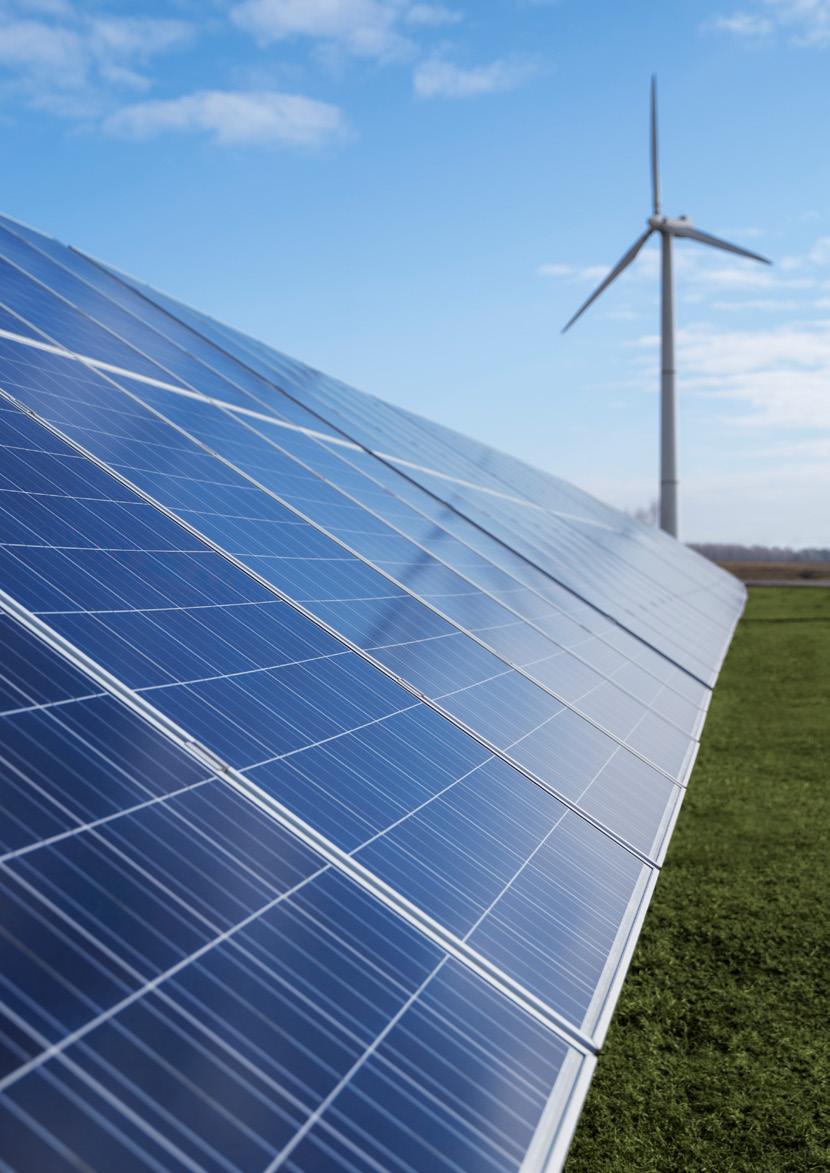
US Commits $88.9M Funding for East Africa Green Energy Projects
The US announced plans to enhance access to green energy in the East and Central African region through the Power Africa initiative. Speaking on the sidelines of the ongoing Africa Energy Forum in Nairobi, USAID’s Administrator Samantha Power noted that Power Africa will provide grants of up to $88.9 million in the next five years to support reliable energy projects in the region. The new initiative, USAID noted, will guarantee 10 million connections for households and businesses once completed and provide sustainable power to an estimated 50 million people.
Furthermore, the US top envoy committed to mobilizing private investors to raise a separate $4.7 billion to help generate 1,227 megawatts of green energy and develop 1,500 kilometers of transmission lines.
However, USAID did not disclose the specifics of the projects within the East and Central Africa region set to benefit from the program.
Need for East Africa Green Energy Funding
In a subsequent statement, Power appreciated the relationship between the US and Kenya and affirmed that the global power is willing to harness input from the private sector to drive progress.
“US-Kenya ties are producing results: US is now Kenya’s largest export market. We provide drought assistance, support Kenya’s energy sector—which uses 90%
US-Kenya ties are producing results: US is now Kenya’s largest export market. We provide drought assistance, support Kenya’s energy sector—which uses 90% renewables— and spur tech partnerships in Silicon Savannah
renewables— and spur tech partnerships in Silicon Savannah,” the administrator noted. The USAID was celebrating the 10th anniversary of the Power Africa initiative which has been in existence since 2013.


The program, according to USAID, has so far delivered access to electricity to more than 172 million people across sub-Saharan Africa. The announcement came amid intensified efforts focusing on Africa
with the goal of fast-tracking the shift to sustainable power.
According to a report by International Energy Agency (IEA) executive director Fatih Birol in May, 2023- investment trends in Africa showed that the continent was steadily shifting from fossil fuels.
For every dollar invested in fossil fuels, the IEA boss stated, about 1.7 dollars are now going into clean energy.
Samantha Power USAID AdministratorA SPOTLIGHT ON THE ROLE OF CLIMATE ADAPTATION IN AGRIBUSINESS
As Africa shifts its energies towards net zero emissions targets, it needs to transition from a fossil fuelbased energy system to one that is renewable and ultimately more sustainable.
As nations worldwide aim to achieve net-zero emissions, Africa stands at the cusp of an energy transformation. The continent, rich in renewable energy resources and aspiring to diversify its economic sectors, is embarking on a transition from a
fossil fuel-based energy system to one that is more sustainable and powered by renewable sources. The energy transition is not just about reducing carbon footprints but also encompasses a broad array of economic and social opportunities.
For Africa to capitalize on this transition, strategic investment and appropriate regulatory frameworks are necessary. The investment will foster innovation, infrastructural development, and skills transfer,
while a conducive regulatory environment will encourage local and foreign investors to engage in renewable energy projects, driving the continent’s move towards netzero emissions.
Climate adaptation plays a critical role in this transition, particularly in sectors like agribusiness, which are key to Africa’s economy and food security. Agribusiness has the potential to become a driving force in the continent’s strive for net-zero emissions, through practices such as sustainable farming, climatesmart irrigation, and innovative value addition processes.
A case study that underscores this potential is Eric Onchonga’s venture, Irri-Hub Ke, in Kenya. The company provides climate-smart irrigation solutions and training for farmers, contributing towards climate change adaptation and promoting food security. It showcases the successful integration of climate adaptation strategies into agribusiness and the crucial role of such initiatives in Africa’s transition towards net-zero emissions.

Eric Onchonga: Kenyan Medical Laboratory Scientist in Agribusiness
• How did you get into agribusiness?
Coming from a background in Medical Laboratory Science, I have always held the belief that primary health care begins with diet and nutrition. I spent a brief period working in a medical laboratory before deciding to venture into agribusiness, which aligns more closely with my life’s mission and purpose. Growing up in Kenya’s sugar belt, I experienced firsthand the fluctuations in the annual sugarcane harvest as rainfall patterns changed and precipitation levels decreased. The dwindling farm yields and revenues resulted in most farmers struggling to afford balanced diets. Recognizing this, I saw solar irrigation as a viable solution to reduce the over-reliance on sugarcane, improve access to proper nutrition, and increase income from short-term high-value horticultural crops. Over time, I have replicated this model in other regions of the country, including areas that had barely practiced crop farming before.
• What agribusiness solutions do you offer?
At Irri-Hub Ke, we provide climatesmart irrigation solutions (products and services) aimed at enhancing farmer resilience amidst climate change. For rainwater harvesting,
We sell and install greenhouses and agricultural nets. Alongside our products, we provide farmer training on climate-smart irrigation and best agricultural practices such as zero tillage.
 Eric Onchonga Kenyan Medical Laboratory Scientist in Agribusiness
Eric Onchonga Kenyan Medical Laboratory Scientist in Agribusiness

Irri-Hub Ke offers damliners (geomembranes) for lining surface ponds, and solar pumps for extracting water from the reservoirs and storing it in an elevated tank. Our company also specializes in gravityfed drip irrigation systems. To reduce reliance on chemical inputs, we offer
mulching paper that prevents weed growth and reduces evaporation rate. Additionally, we sell and install greenhouses and agricultural nets. Alongside our products, we provide farmer training on climate-smart irrigation and best agricultural practices such as zero tillage.
• What are the opportunities in agribusiness?
There are numerous untapped opportunities in Kenya and the wider African continent. We have a pressing need for value addition of perishable agricultural produce. This itself presents a green area ripe for innovation and impactdriven investment. Hydroponics and aquaponics are slowly gaining popularity, but there is a significant niche to be tapped in the training, installation, and maintenance of these systems. Innovators can also look into the production of regionspecific drought and pest-resistant seedlings. The installation of controlled environment structures such as smart greenhouses and storage facilities is another lucrative area in which aspiring agri-preneurs could thrive.

• What agribusiness challenges do you experience?
Like any other sector, the climatesmart irrigation sector comes with its own set of challenges. These include limited water resources and unreliable water supply, weak farmer organizations, a limited irrigation equipment supply chain and service market, high competition over water resources, and a lack of investment in extension marketing and logistics to reach more end users.

• What gaps exist that hamper climate adaptation?
The rate of climate change
While many people are aware of climate change, there is a low level of understanding of everyone’s roles in reducing greenhouse gas emissions and adapting to changes to improve the situation. Most households tend to take this issue lightly
Onchongaadaptation in Kenya has been slowed by a low level of knowledge and risk awareness. While many people are aware of climate change, there is a low level of understanding
of everyone’s roles in reducing greenhouse gas emissions and adapting to changes to improve the situation. Most households tend to take this issue lightly.
• What’s the place of climate adaptation towards a food secure society?
Climate change adaptation and food security are inseparable. Changes in climate reduce food quality and quantity and disrupt food availability. By building societal resilience through climate change adaptation, we directly contribute to food system security by increasing yield and achieving price stability.
• Is Kenya doing enough?
Climate change poses a significant risk to Kenya’s top revenue earners, agriculture and tourism. The nation has certainly been active in promoting climate change adaptation, as documented in the National Climate Change Action Plan (NCCAP), National Climate Change Response Strategy, and National Adaptation Plan (2015 – 2030). I would say, we are on the right path and we are making progress.
GREEN ENERGY EXPERT OPINION

Emerging Brand Africa Contributor
A Green Future Ahead
Considering governments commitment to reduce emissions and meet renewable energy targets, the renewable energy market in Africa is projected to grow exponentially in the next few years. According to the International Energy Agency, renewable energy investments in Africa are expected to reach US$51 billion in 2023, with US$28 billion allocated to photovoltaic (PV) technology and US$19 billion to wind.
The 2022 edition of the Sustainable Development Goal (SDG 7) aims to ensure access to affordable, reliable, sustainable, and modern energy by 2030. However, the impacts of the pandemic, including lockdowns, disruptions to global supply chains, and diversion of fiscal resources to keep food and fuel prices affordable, have affected the pace of progress.
Climate Adaptation
Climate change profoundly influences global food security, affecting the amount and quality of food due to rising temperatures, unpredictable weather patterns, increased droughts and floods, and changes in crop production. These factors can cause a decline in crop yields, leading to food shortages and leaving vulnerable populations without access to enough nutritious food.
In an October 2022 interview, William R. Sutton, Global Lead for Climate Smart Agriculture for the World Bank, stated that the number of people starving had increased from 135 million in 2019 to 345 million in 82 countries by June 2022, due to the war in Ukraine, supply chain disruptions, and the continued economic fallout of the COVID-19 pandemic.
Rising food commodity prices in 2021 were a significant factor, pushing approximately 30 million people in low-
income countries towards food insecurity. Willis Ogutu, Assistant Manager for Anglophone Africa at MicroSave Consulting, believes the role of agribusiness in fostering sustainable food systems is key to ending hunger in Africa. Easing trade barriers, supporting infrastructure, climate-smart agricultural systems, and private sector investments can help transform Africa into a breadbasket for the world.
Green Food for Thought
The World Bank estimates that the global food system is responsible for about a third of greenhouse gas emissions, second only to the energy sector. It is the number one source of methane and biodiversity loss. Reducing carbon emissions and becoming more resilient is possible, but doing so will require significant social, economic, and technological change
Case Study: Rwanda’s GREEN REVOLUTION
Rwanda’s food systems have seen significant improvement with
agricultural production becoming increasingly diversified, efficient, and modern. Agriculture is a priority sector in Rwanda’s Vision 2050 national development strategy. The government’s goal is to transition from subsistence farming to fully monetized, technology-intensive commercial agriculture and agroprocessing by 2050.
The vision for Rwanda is to become a nation that enjoys food security, nutritional health, and sustainable agricultural growth, stemming from a productive, green, and market-led agricultural sector. The government aims to ensure food and nutrition security, adopt modern agribusiness technologies, and professionalize farmers in terms of production and commercialization of outputs. The end goal is the creation of a competitive agricultural sector.
To achieve these objectives, the government is significantly investing in rural infrastructure, including irrigation systems, storage facilities, and roads. Furthermore, the government is making strides to address food safety and quality and to promote agribusiness.
CS David Chirchir Welcomes President Designate of COP28 at Africa Energy Forum, aef23 in Nairobi
The President-Designate of COP28
UAE, Dr. Sultan bin Ahmed Al Jaber, graced the Africa Energy Forum, aef2023, in Nairobi, Kenya. Dr. Sultan, who is also the UAE Minister for Industry and Cooperatives held talks with Kenyan Energy Cabinet Secretary Davis Chirchir.
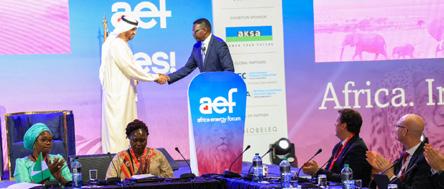
The discussions centred around securing affordable, accessible, and sufficient climate change financing for African nations.
According to the two, Africa has the capacity to become a central hub for renewable energy and play a crucial role in promoting green growth.
CS Chirchir urged Dr. Sultan to champion political support in order to actualize this vision. Dr. Sultan acknowledged the immense potential of Africa as a powerhouse of clean energy.
During the Ministerial Roundtable discussions, the CS emphasized Energy conservation as one of the key climate change adaptation strategies with respect to migration from thermal to renewable energy. “This will be key in achieving remarkable progress in meeting our energy needs while reducing our carbon footprint and contributing to global efforts in combating climate change and creating a greener planet”.
He also acknowledged the need for political goodwill, visionary ambition, and sufficient, accessible, and affordable capital to develop this potential.
Kenya’s Commitment
Kenya’s President William Ruto also had talks with the UAE minister. President Ruto affirmed his
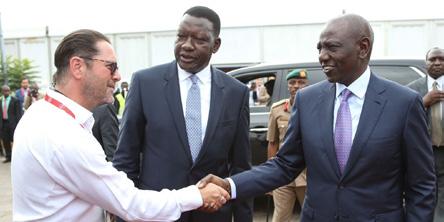
government’s commitment to work with the UAE towards addressing climate change.
“Kenya will work with the UAE on a just energy transition, unlocking climate finance and accelerating green growth in Africa in the lead up to the respective summits for a win-win formula for all,” President Ruto said.
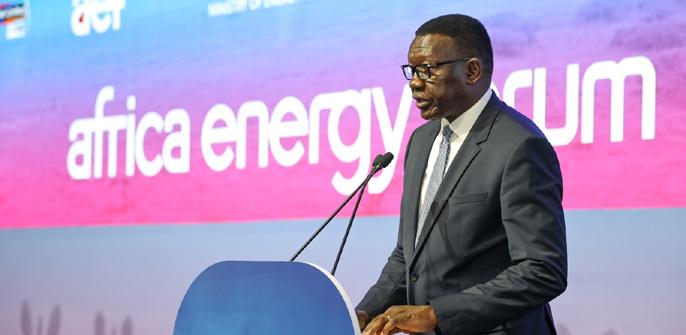
He also noted that there were similar events ahead, which would realise solutions for both Kenya and the international community.
“Climate change is the greatest challenge confronting the world today. The Global Financing Pact later this week in Paris, the African Climate Action Summit in Nairobi (September) and COP28 in Dubai (December) will be critical milestones for the international community to charter a solutionsoriented path,” he concluded. The 2023 UN Climate Change Conference (COP28) will convene from 30 November to 12 December in (UAE).
ASIA AN EMERGING GIANT MARKET

Asian Trade Relations
Asia is home to many of the world’s most powerful and advanced markets, including China, Singapore, Malaysia, South Korea, India, Hong Kong, Indonesia and Japan. According to KPMG/HSBC Emerging Giant Markets in Asia-Pacific 2022, the key diver for the emergence of these giants can be attributed to three main drivers:
Demographics: The Asia Pacific region boasts a growing population, a swelling workforce, and a burgeoning consumer class. Digital Advancements: The region is home to a rapidly expanding population of digital natives. Dynamic Market Movements: Better access to the Internet, growing prosperity, and improved education have fostered a new class of digital entrepreneurs who are adept at identifying and filling gaps in the regional market. (KPMG/HSBC 2022)
Over the years, cargo shipments along the Middle Corridor, also known as the Trans-Caspian International Transport Route (TITR), have surged. This route is a multilateral institutional development linking the containerized

rail freight transport networks of the People’s Republic of China (PRC) and the European Union through the economies of Central Asia, the Caucasus, Turkey, and Eastern Europe.
Goods moved along the corridor grew from approximately 350,000 tons to 530,000 tons between 2020 and 2021. However, Russia’s 2022 invasion of Ukraine and the West’s subsequent economic sanctions on Moscow notably boosted the corridor’s use. Central Asian countries remained neutral in the conflict, leveraging opportunities in having an alternative to the Russiandominated Northern Corridor and better infrastructure to support greater intra-regional trade.
Cargo shipments along the Middle Corridor jumped to 3.2 million tons in 2022. Some now predict that the Middle Corridor’s capacity will skyrocket to 10 million tons, given Turkey’s completion of the Marmaray railway under the Bosporus Strait, enabling rail cargo from Central Asia to travel directly into the heart of Europe.
Singapore: A Benchmark for Africa
Beyond the African continent, I had the opportunity to explore the bustling trade hub of Singapore. As a key trade partner for many African nations, Singapore has consistently demonstrated that economic progress and sustainable development can go hand in hand. The lessons that this city-state offers can serve as valuable benchmarks for emerging economies.
SINGAPORE A GLOBAL FINANCIAL HUB
According to the Asian Development Bank, Singapore’s unique blend of Asian, European, and American influences makes the country both appealing and welcoming to the global business community. The World Bank ranked Singapore first in the world in achieving human capital (knowledge, skills, and health) in its Human Capital Index. Furthermore, the Heritage Foundation ranked Singapore second in the world for economic freedom.
As a former British colony, Singapore’s legal and financial structures closely resemble those of the US and the UK. The Heritage Foundation’s 2022 Index of Economic Freedom report states that Trade freedom is strong, and well-secured property rights promote entrepreneurship and innovation effectively. “The overall rule of law is undergirded by a high degree of transparency and government accountability” (THF 2022 Report).
Singapore’s remarkable economic freedom score of 84.4 in the 2022 Index surpasses both regional and global averages. This prosperous nation often termed the “Lion City” due to its robust currency and infrastructure, is an essential nexus for
major international banks, multinational organizations, and leading financial institutions, functioning as their strategic operational hubs in the AsiaPacific region.
Ease of Doing Business in Singapore
Singapore has been consistently recognized as the world’s best place to do business, according to the World Bank’s Doing Business 2019 report. Compared to many business hubs, it’s easier and quicker to register a company in Singapore; the process only takes a day, given all the proper requirements are completed, and the application is duly submitted.
Foreign Income Exemption and Attractive Corporate Tax Rates
Besides its vast network of free trade and tax treaties, Singapore also offers one of the most attractive corporate tax structures in the world.

The first three years, the taxable income of non-resident corporations is tax-exempt which is considered a “zero tax” jurisdiction.
Singapore’s business-friendly legal and tax structure, reliable infrastructure, and dependable regulatory processes provide a
positive commercial environment. The government tightened restrictions on foreign labor in 2020. In 2021, the International Monetary Fund (IMF), estimated that government subsidies, grants, subventions, and capital injections to businesses and other organizations consume about 17 percent of the Gross Domestic Product (GDP) which currently stands at $397 billion.
Singapore’s Trade Relations with African States
To facilitate growing business interest, Enterprise Singapore officially launched its first Overseas Centre in Johannesburg, South Africa, in January 2013, its first office in Sub-Saharan Africa. Additional offices were opened in Accra, Ghana in July 2013 and in Nairobi, Kenya, in June 2018.
On June 12, 2018, Singapore signed a Double Tax Avoidance Agreement (DTA) with Kenya to provide relief from double taxation in situations where income is subject to tax for both countries. In addition to the DTA, the two countries also signed the Bilateral Investment Treaty (BIT) to promote greater investment flows between Singapore and Kenya by protecting the interests of both Singaporean and Kenyan investors.
Bongiwe Mabusela Equity In Mining is Everyone’s Responsibility
A South African Woman Breaking Barriers for Minority Groups in Mining Sector
Bongiwe Mabusela, the Director of South Africa’s Department of Mineral Resources and Energy (DMRE)- believes that embracing inclusivity and diversity in the mining sector would help to optimize value accrued from mine treasures in the region.
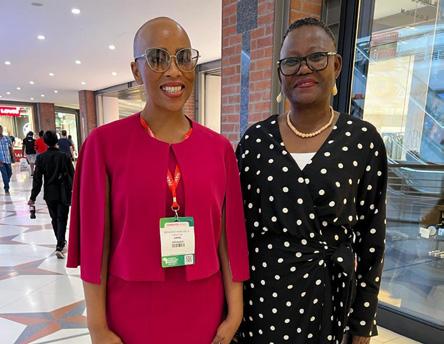
For over a decade now, Mabusela has been championing liberalization of the mining sector to involve startups, new entrants, and Small and Medium Enterprises (SMMEs). Her strategic role influxes deescalating tensions between mines and communities.
Her drive has been the conviction that SMMEs are the core of any economy and that they should be allowed to play an active part in economic growth.
Through her position as the director of DMRE, which is the body mandated to transform and develop the mining and energy sectors in South Africa, Mabusela has undertaken initiatives to ensure minority groups have access to mining licenses through the B-BBEE accreditation, a Broad-Based Black Economic Empowerment certification in South Africa,
According to Mabusela, “Women are part of the ecosystem, and we need to rethink our inclusive strategy to enable their growth.”
In particular, she is known for her efforts in agitating for the involvement of women in activities within the mining ecosystem. For her, the participation of women should go beyond having them take up jobs in mining but rather empowering them to become business owners in the industry.
Leaders of industry and government should be facilitating the inclusion of women in the mainstream economy, where companies’ spend should look at how many local, women-owned companies are participating
She reiterated this during the DRC Mining Week held in Lubumbashi in June, stating that governments and leaders should put measures in place to promote the inclusivity of all people.
“Leaders of industry and government should be facilitating the inclusion of women in the mainstream economy, where companies’ spend should look at how many local, women-owned companies are participating,” she noted during a panel discussion that brought together Women in Mining across the region.

“We need an inclusive business model that works for all indigenous
people across Africa.”
Her appeal came on the back of multiple reports indicating that most women in Africa’s mining sectors work in the extraction stage of artisanal and small-scale mining sites that are known for low wages and poor working conditions.
Though the recent outlook has established a slight increase in the number of women in the industry, major players in the mining sectorsMabusela being one of them- are still pushing for more measures to ensure a diversified and more competitive mining industry.
H.E Bridgette Motsepe, an extraordinary force in Africa. With unyielding determination and an indomitable spirit, she has shattered stereotypes and blazed a trail in the mining industry, becoming a beacon of hope for women worldwide.
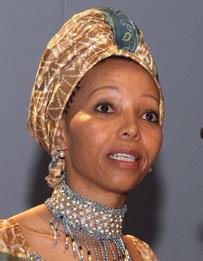
She is the Chairman and Founder of Mmakau Mining Company, which has interests in gold, platinum, coal, and chrome mines. Her boldness knows no bounds. With diverse interests spanning gold, platinum, coal, and chrome mines.
Beyond her monumental achievements, H.E Motsepe assumes the prestigious role of Ambassador of Economic Development for the Pan-African Parliament in South Africa. Her commitment to fostering economic growth and prosperity across the continent amplifies her impact on a global scale. Over the years, Mmakau has grown to be a reputable company in terms of innovations, shift to sustainable mining culture, and contribution to the socioeconomic well-being of the mining communities.
In addition, she has held key administrative positions, including the President of the South African Mining Development Agency (SAMDA) and Vice Chairperson of the
H.E Bridgette Motsepe, a Pan-African Powerhouse with a Remarkable Journey in Liberating Africa’s Mining Industry
Minerals and Mining Development Board in South Africa. However, it is her efforts and agitation for reforms in South Africa’s mining industry that have earned her recognition and repute across the African continent and globally.
Mmakau was founded in the1980s when South Africa was still grappling with the harsh environment imposed by the apartheid regime.
While recounting her experience as an upcoming black entrepreneur in the onset days of Mmakau during the 2023 DRC Mining Week, H.E Motsepe noted that four foreign companies had assumed control of 83% of South Africa’s mining industry hence limiting the participation of indigenous players.
She is credited for being among the people who pushed for the nationalization of mining in South Africa to change the then status quo where the government of South Africa did not have control of mining rights.
Among the reforms she prides herself on having initiated was the push to have at least 26% of shares in every company granted mining rights owned by locals.
“DRC is 63 years old, but when I ask the President of the local mining chamber how many local people own shares in the mines I am very worried,” H.E Motsepe stated while addressing a session in the DRC mining week.
“DRC is 63 years old, but when I ask the President of the local mining chamber how many local people own shares in the mines I am very worried,” H.E Motsepe stated while addressing a session in the DRC mining week.
Decades after the battle to open up South Africa’s mining sector, H.E. Motsepe still wears the reformist hat and continues to address contemporary challenges on the continent.
Currently, H.E Motsepe likens the situation in the early days of her mining journey to the prevailing state of mining in the Democratic Republic of Congo (DRC).
According to her, there is an urgent need for the DRC government and other players in the industry to institute regulations that will make it possible for the locals to participate in mining.
“DRC is 63 years old, but when I ask the President of the local mining chamber how many local people own shares in the mines I am very worried,” H.E Motsepe stated while addressing a session in the DRC mining week.
In her speech, she decried the dilapidated state of DRC’s roads and infrastructure in general, describing the paradox of a rich country with limited infrastructure growth.
H.E Bridgette Motsepe emphasized the importance of countries like the DRC remaining cautious regarding the emerging trend of neocolonialism, which poses a potential obstacle to the local population benefiting from the abundant mineral resources.
Motsepe believes that it is crucial for the native population to fully reap the rewards of their own mineral deposits without any undue influence or exploitation. She encouraged a balanced and equitable approach that ensures fair distribution of wealth and opportunities for the people of the DRC
EVENTS COMING UP




